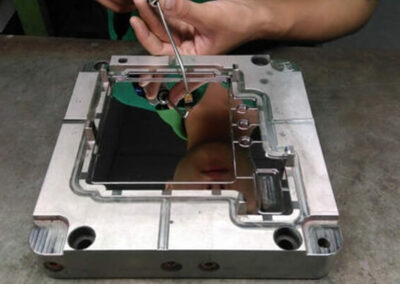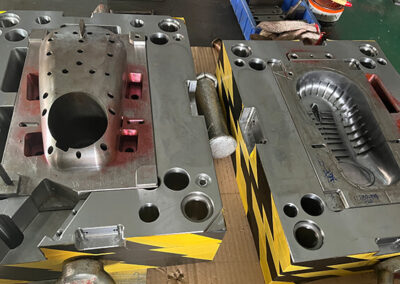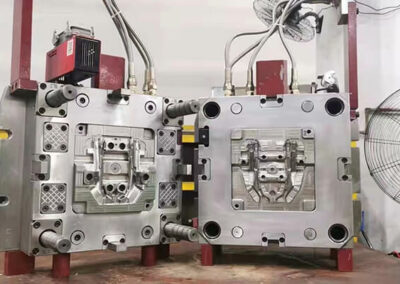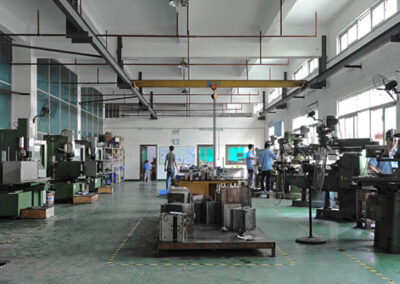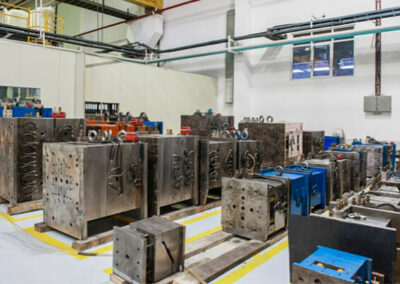Professional Mold Manufacturer—Sungplastic
With the advancement of science and technology and the improvement of people’s production level, plastic products have become ubiquitous. However, different plastic products require specific manufacturing processes to create parts based on product characteristics and project requirements. If you need custom plastic parts, one of the first things to consider is choosing the molding process that best suits your specific application.
Sungplastic is a professional mold manufacturer, we provide a variety of molding processes, including injection molding, blow molding, compression molding, extrusion molding and rotational molding services. In this article, we will detail these five processing techniques to provide you with professional advice and guidance on your project to ensure that your plastic products meet high quality standards.
Injection Molding – Ideal for High-Quality, High-Volume Part Production
Injection molding stands out as the most versatile among all injection molding techniques, making it the method of choice for high-quality, high-volume part manufacturing. The process utilizes a range of presses that vary in size, typically rated by pressure or tonnage. Larger machines are capable of injecting molten plastic to mold car parts, while smaller machines can craft precision plastic components for surgical applications. Additionally, the versatility of injection molding is significantly boosted by the array of plastic resins and additives available, granting designers and engineers considerable flexibility.
-
- Mold Design:
Injection molds, often crafted from steel, are pivotal in the process. These molds contain cavities that mirror the desired parts. The design precision of these molds is crucial to achieving the desired end product. - Melted Plastic Injection:
The process begins as melted plastic material is injected into the mold, efficiently filling each cavity. This injection phase is critical for precision and consistency in part formation. - Cooling:
After the plastic material has occupied the mold cavities, the entire mold is cooled. This cooling phase is vital for ensuring the material solidifies in the exact shape of the cavities. - Ejection:
Once the plastic has sufficiently cooled and solidified, the mold opens, and the finished parts are ejected using pins or other mechanisms. This step resembles the process of removing a set gelatin dessert from its mold.
- Mold Design:
Injection molding boasts numerous customization options and enhancements that allow for the attainment of desired finishes and structures. While the mold-making costs can be relatively high, the cost per part becomes remarkably economical in high-volume production scenarios. Furthermore, the wide range of available plastic resins, along with various finishing options, has contributed to the widespread popularity of injection molding in today’s manufacturing landscape.
Sungplastic is an experienced mold manufacturer and we provide professional injection molding services to meet your customized needs.

Blow Molding – Ideal for Hollow Objects
Blow molding is a manufacturing process well-suited for producing hollow objects, particularly containers like bottles. This process shares similarities with the traditional art of glass blowing. It involves a series of steps to shape heated plastic into the desired form using air pressure, and it is widely employed for mass production of one-piece hollow objects. Here’s a closer look at the process:
-
- Parison Formation:
The process begins with the creation of a parison, which is a heated plastic mass typically in the form of a tube. This parison serves as the starting material for the container. - Inflation with Air:
The parison is placed into a mold, and air is introduced into it. The pressurized air forces the plastic material to expand and conform to the shape of the mold cavity. This step is akin to inflating a balloon within a specific mold. - Mold Shaping:
As the plastic is inflated, it adheres to the mold’s interior surface, taking on the precise shape and details of the mold. This results in the formation of the desired hollow object, whether it’s a bottle, container, or another similar item. - Cooling and Solidification:
Once the plastic has taken on the mold’s shape, it is allowed to cool and solidify within the mold. Cooling is crucial to ensure that the plastic retains its shape and structural integrity. - Ejection:
After the plastic has sufficiently cooled and solidified, the mold opens, and the finished product is ejected from the mold cavity. The container is now ready for further processing, labeling, or packaging.
- Parison Formation:
The blow molding process is exceptionally well-suited for the production of high volumes of hollow objects in a cost-effective manner. It excels in creating uniform, thin-walled containers like bottles. This manufacturing method is particularly popular in the beverage and packaging industries due to its efficiency and ability to produce consistent, high-quality products. Whether you need to manufacture a large quantity of bottles or similar hollow objects, blow molding is a reliable and economical choice.
Sungplastic is an experienced mold manufacturer and we provide professional blow molding services to meet your customized needs.
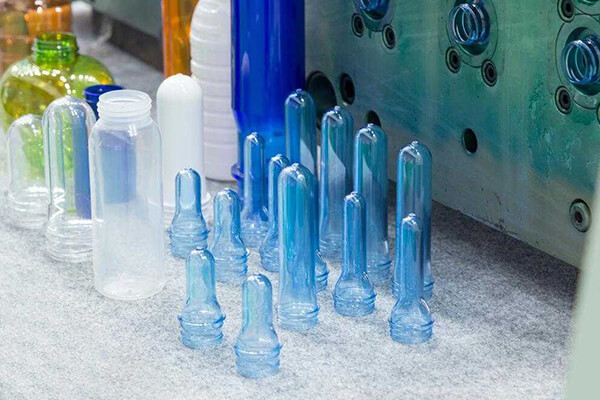
Compression Molding – Ideal for Large Objects
Compression molding is a highly effective manufacturing method, particularly well-suited for producing larger objects, including vital components in the automotive industry. This method derives its name from the fundamental process involved, wherein heated plastic material is placed within a heated mold and then compressed to attain the desired shape. Here’s a detailed look at the compression molding process:
-
- Material Preparation:
The process commences with the preparation of the plastic material. This material is typically in bulk form but is often supplied in the form of sheets, which are easier to handle. - Heating and Curing:
The plastic material, whether in bulk or sheet form, is heated until it becomes pliable. This heating process, known as curing, is critical as it ensures that the final part maintains its structural integrity. The heated material is then placed in a heated mold cavity. - Compression:
Once the plastic material is properly heated and positioned within the mold, a hydraulic press or other compression equipment is used to exert immense pressure on the material. This compression causes the material to take on the shape of the mold cavity. - Cooling:
After the desired shape is achieved, the compressed material is allowed to cool and solidify within the mold. This cooling phase ensures that the part retains its form and structural strength. - Part Removal:
Once the material has sufficiently cooled and solidified, the mold is opened, and the finished part is carefully removed. In cases where sheeting plastic material is used, any excess material is trimmed within the mold before the part is extracted.
- Material Preparation:
Compression molding is particularly well-suited for materials that require superior strength, such as thermosetting resins, fiberglass, and reinforced plastics. These materials exhibit excellent structural properties, making compression molding invaluable in industries like automotive manufacturing. It is known for its ability to produce high-quality, large, and intricately shaped components efficiently, meeting the stringent requirements of the automotive industry and other sectors where robustness is paramount.
Sungplastic is an experienced mold manufacturer and we provide professional compression molding services to meet your customized needs.
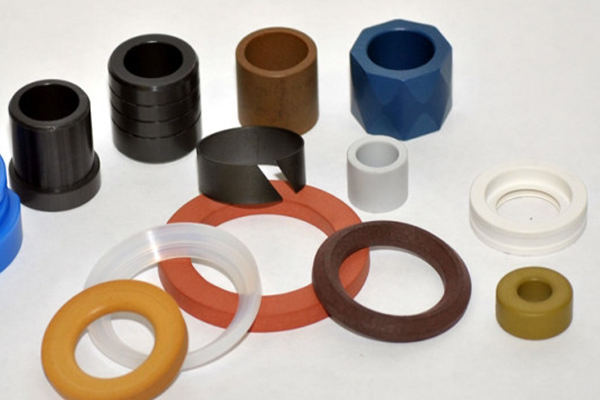
Extrusion Molding – Ideal for Long Hollow Applications
Extrusion molding is a specialized manufacturing process perfectly suited for producing long, hollow objects. It distinguishes itself from other molding techniques by directly extruding melted plastic into a die to form the final product, relying on the die shape rather than a mold for determining the product’s shape.
Here’s an in-depth exploration of the extrusion molding process:
-
- Material Melting:
The process initiates with the melting of plastic resin. This melted plastic, typically in the form of pellets, is conveyed into a heating chamber where it transforms into a molten state. - Die Extrusion:
Instead of utilizing a traditional mold, the molten plastic is forced through a die—a specially designed orifice that imparts the desired cross-sectional shape to the extruded product. The die is crucial in determining the final product’s shape, be it tubing, pipes, or straws. - Cross-Sectional Shaping:
As the molten plastic is extruded through the die, it takes on the form and dimensions defined by the die’s shape. This shaping process ensures that the extruded product has a consistent and precise cross-sectional profile. - Cooling and Solidification:
Following the extrusion, the plastic material undergoes a cooling process to resolidify and maintain its newly formed shape. This step ensures that the extruded product retains its structural integrity. - Cutting or Rolling:
Once the extruded plastic has cooled sufficiently, it can be cut into specific lengths or rolled onto spools for convenient shipment and storage.
- Material Melting:
Extrusion molding is particularly well-suited for thermoplastic materials because they can be melted and resolidified multiple times without significant degradation. It offers an efficient and cost-effective means of producing a wide variety of shapes, especially those with long, hollow forms.
Sungplastic is an experienced mold manufacturer and we provide professional extrusion molding services to meet your customized needs.
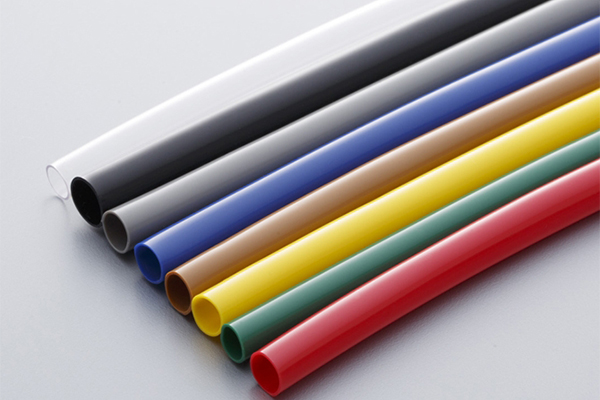
Rotational Molding- Ideal for Large, Hollow, One-Piece Components
Rotational molding, often referred to as rotomolding, is a specialized manufacturing process ideally suited for crafting large, hollow, and one-piece parts. This method relies on the application of high temperatures and rotational movement to achieve the desired part formation. The unique feature of rotational molding lies in its ability to utilize constant rotation to create centrifugal force, resulting in the even wall thickness of the produced products. While it may not be the fastest molding process available, rotational molding offers distinct advantages for specific applications, often proving to be a cost-effective alternative to other molding techniques.
Let’s delve into the intricacies of the rotational molding process:
-
- Mold Coating through Rotation:
The core of the rotational molding process involves introducing plastic material into a mold and then initiating the rotation of the mold. As the mold rotates, the plastic material evenly coats the interior surface of the mold. This rotational movement ensures that the plastic spreads uniformly, forming a consistent wall thickness across the entire part. - Heating and Fusion:
Concurrently, high temperatures are applied to the mold, causing the plastic material to melt and fuse together, adhering to the mold’s shape. This heating phase is crucial for molding the plastic into the desired configuration. - Cooling and Solidification:
After the part has been evenly coated and the plastic has solidified, the mold is gradually cooled. This cooling phase solidifies the plastic in its final form. - Ejection:
Once the part has cooled sufficiently and taken its shape, it can be carefully ejected from the mold.
- Mold Coating through Rotation:
The affordability and efficiency of rotational molding, especially for specific applications where large, uniform-walled parts are required, make it a valuable and eco-friendly manufacturing process. Its versatility and suitability for a range of industries further underscore its significance in modern manufacturing.
Sungplastic is an experienced mold manufacturer and we provide professional rotational molding services to meet your customized needs.
Contact Us to Choose the Appropriate Molding Process
In the previous article, we have learned that various molding methods have unique advantages and limitations, and they play a vital role in the manufacturing of different types of products.
Sungplastic is a professional mold manufacturer, we have an experienced team of engineers and advanced technical equipment. Whether you require injection molding, blow molding or rotational molding, we can meet your individual needs.
The selection of a molding method is a complex decision that requires careful evaluation based on the needs of the specific project. Our team will provide you with professional advice and customized suggestions to ensure that the molding method you choose best meets the needs of your project, resulting in optimal manufacturing efficiency and cost-effectiveness. If you have any questions or need a quote, please contact us today. We look forward to providing excellent mold solutions for your projects.
Get a free quote and design analysis today.
We’ll reply to you within 6 working hours.
We respect your privacy.
+86 139 2927 4777 (WhatsApp, Wechat)


